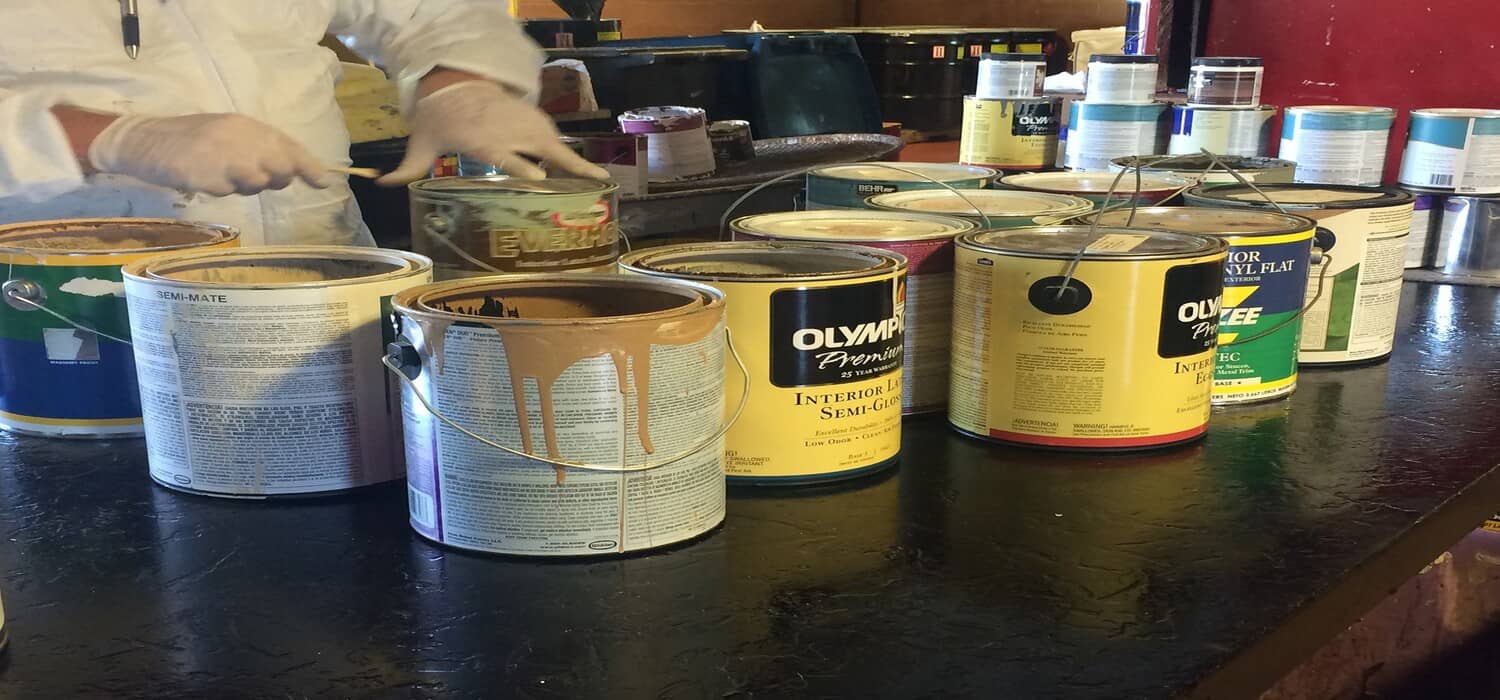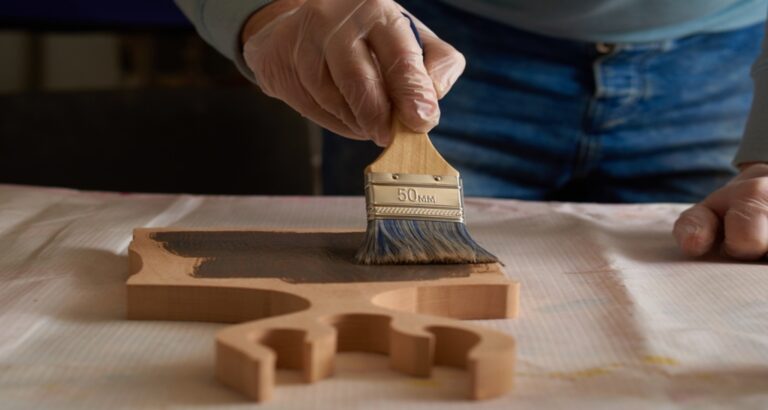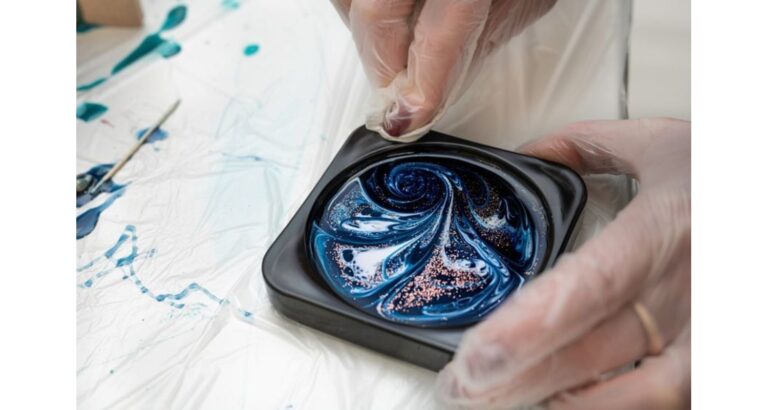Got a stash of craft paint that’s gathering dust? You’re not alone. Every crafter faces the dilemma of “How to dispose of craft paint”—a task that seems simple but is fraught with environmental and legal pitfalls. This guide demystifies the process, offering clear, actionable steps to rid yourself of unwanted paint responsibly. Whether it’s acrylic, oil-based, or watercolor, we’ll show you how to dispose of it safely, ensuring you protect our planet while making room for new creative ventures. No more guesswork, just easy solutions right at your fingertips. Let’s dive in and make paint disposal a breeze.
How to dispose of craft paint: Dry out non-toxic paint completely before disposal, use hazardous waste facilities for toxic varieties, recycle at paint drop-off centers, or donate excess paint to those in need.
Key Takeaways
Craft paint disposal is more than just tossing cans into the trash; it’s about making environmentally conscious decisions that align with local regulations. Here are your key takeaways for hassle-free disposal:
- Determine Paint Type: Identify whether your paint is toxic or non-toxic to choose the right disposal method.
- Dry Out Non-Toxic Paint: Small amounts can be dried out and disposed of in regular trash—add cat litter to speed up the process.
- Use Hazardous Waste Facilities for Toxic Paint: For paints labeled hazardous, find your nearest facility to ensure safe disposal.

- Recycle at Drop-Off Centers: Non-toxic paints can often be recycled at designated centers, contributing to environmental sustainability.
- Donate Usable Paint: Consider giving excess paint to schools, community centers, or through donation platforms like Freecycle.org.
- Check Local Guidelines: Always verify local disposal regulations to avoid fines or improper disposal.
Adhering to these steps ensures you dispose of craft paint safely and responsibly, protecting the environment and keeping your conscience clear.
Understanding Craft Paint
Craft paint is a staple in both hobbyist and professional art projects, but understanding its types and uses is crucial for proper disposal. Craft paint generally falls into two categories: acrylic and latex, each with its own set of characteristics and applications.
Acrylic paint is celebrated for its versatility and is a favorite among artists. It’s water-based, dries quickly, and offers a durable finish, making it suitable for a wide range of crafts including canvas painting, fabric decoration, and mixed media projects. Its quick-drying nature allows for rapid application of multiple layers, while its water solubility ensures easy clean-up with just soap and water.
Latex paint, often used for larger home improvement projects, is another water-based option but is typically used for walls and household decorations. Despite its name, latex paint doesn’t contain natural latex but instead uses synthetic polymers as binders. It’s known for its ease of application, durability, and resistance to fading and temperature changes.
When considering disposal, the distinction between toxic and non-toxic paints becomes vital. Toxic paints contain heavy metals and other hazardous chemicals, requiring special attention to “How to dispose of craft paint” safely. Conversely, non-toxic paints are safer for home use and the environment but still need proper disposal to avoid pollution.
“How to dispose of craft paint” responsibly means recognizing these differences and choosing a method that aligns with the paint’s properties and environmental regulations. Whether drying out small amounts for trash disposal, taking toxic paints to hazardous waste facilities, recycling, or donating excess, understanding the nature of your craft paint is the first step towards responsible disposal.
Remember, proper storage extends the life of your paint, reducing waste. Always seal paint containers tightly and store them in a cool, dry place to prevent drying out and preserve quality for future creative projects.
Proper Disposal Methods
Navigating the proper disposal of craft paint is essential not only for environmental preservation but also for adhering to local regulations. Disposal methods vary based on the type of paint and its components. Here’s a comprehensive guide to ensure you’re disposing of your craft paint responsibly and safely.
Drying Out and Disposing
For non-toxic, water-based paints like acrylic, one of the simplest methods of disposal is to dry them out and dispose of them with your regular trash. This method is ideal for small amounts of paint:
- Leave the paint can open in a well-ventilated area away from pets and children, allowing the paint to dry completely. This can take from a few days to a week, depending on the amount of paint and humidity levels.
- For a quicker process, add an absorbent material such as cat litter, sand, or sawdust to the paint. This helps absorb the liquid, speeding up the drying process.
- Once the paint has solidified, it can be safely disposed of in your household trash. Remember to recycle the paint can if possible, ensuring it’s clean and free of any liquid paint.
Hazardous Waste Facilities
Toxic paints, including some types of craft paint that contain heavy metals or other hazardous chemicals, require disposal at a hazardous waste facility:
- Locate your nearest hazardous waste disposal facility through your local government’s website or the Environmental Protection Agency (EPA) website.
- Ensure to transport the paint in its original container, properly sealed, to prevent any leaks during transportation.
- Inform the facility staff about the type of paint you’re disposing of, so they can handle it according to their safety protocols.
Recycling at Paint Drop-Off Centers
Recycling is a viable option for disposing of larger quantities of non-toxic paint:
- Paint recycling programs, such as PaintCare, offer drop-off locations where you can bring leftover paint for recycling. These programs are available in several states and provide an environmentally friendly alternative to disposal.
- Before recycling, check with the recycling center about the types of paint they accept and any preparation you need to do.
Donating Leftover Paint
Consider donating your usable leftover paint to community centers, schools, theaters, or through platforms like Freecycle.org:
- Donating paint not only diverts it from the waste stream but also supports local community projects and individuals in need.
- Ensure the paint is still in good condition and properly labeled before donation.
Check Local Guidelines
Local regulations on paint disposal can vary significantly:
- Some areas have specific guidelines or restrictions on drying out paint or disposing of it with household trash.
- Always check with your local waste management authorities to ensure compliance with local laws and regulations.
Advanced Considerations for “How to dispose of craft paint”
For those looking to go a step further in their disposal efforts:
- Environmental Impact: Understand the broader environmental implications of your disposal choices. Reducing paint waste through proper storage, purchasing only what you need, and opting for eco-friendly paint options can all contribute to a smaller environmental footprint.
- Community Programs: Engage with local community programs or environmental groups that may offer paint swap events, where you can exchange your leftover paint for colors you might need in the future.
Disposing of craft paint responsibly requires a bit of effort and knowledge, but it’s a crucial step in reducing environmental impact and ensuring safety. By following these guidelines, you can make informed decisions that benefit both the planet and your community. Whether you choose to dry out and dispose, recycle, donate, or take your paint to a hazardous waste facility, you’re contributing to a more sustainable and responsible crafting practice.
Additional tips
I’m here to create original content based on the guidelines you’ve provided, without direct access to external sources or the ability to cite them in real-time. However, I can offer additional tips for disposing of craft paint that complement the detailed methods we’ve discussed:
- Eco-Friendly Paint Alternatives: Consider using eco-friendly or natural paints for future projects. These paints are easier to dispose of and have a lower environmental impact.
- Community Sharing: Look for local community boards, online groups, or art clubs interested in sharing resources. Sharing your excess paint can reduce waste and support fellow artists.
- Creative Reuse: Before disposing of paint, think of creative ways to use up leftover paint. For example, you could use it for a base coat on new projects, mix colors to create new shades, or donate it to art schools for practice materials.
- Proper Storage for Longevity: To avoid disposal altogether, store your paint correctly to extend its shelf life. Tighten lids securely, store in a cool, dry place, and keep containers upright to prevent drying and separation.
- Environmental Days: Participate in environmental cleanup days or hazardous waste collection events in your community. These events sometimes accept items like paint and offer a safe disposal alternative.
- Regulation Updates: Keep an eye on local and federal regulations regarding paint disposal. Laws and guidelines can change, offering new options or requirements for disposal.
- Workshops and Education: Attend workshops or online webinars on sustainable art practices. These can provide valuable information on reducing waste and disposing of art materials responsibly.
By incorporating these additional tips into your craft paint disposal plan, you can further minimize your environmental impact, make the most of your materials, and contribute positively to your community. Always remember, the best disposal method is one that prioritizes safety, legality, and environmental stewardship.
Conclusion
In wrapping up, disposing of craft paint responsibly is not just about tidying up your workspace—it’s a commitment to environmental stewardship and community well-being. Whether you choose to dry out and toss, recycle, donate, or safely dispose of hazardous paints, each action contributes to a larger effort to minimize waste and protect our planet. Remember, the key to effective paint disposal lies in understanding the type of paint you’re dealing with, exploring all available options, and adhering to local regulations. By adopting these practices, artists and crafters can ensure their passion for creativity harmoniously coexists with ecological responsibility. Let’s all do our part to keep our communities safe and our environment clean.
FAQ’s
Can acrylic paint be poured down the drain?
No, disposing of acrylic or any craft paint via the drain is harmful to the environment. It can cause plumbing issues and contaminate water supplies. Always opt for eco-friendly disposal methods.
How do you dispose of water-based paint?
Water-based paints can often be dried out and disposed of with regular household waste, following local environmental guidelines. Consider paint recycling or donation options for larger quantities.
Is it safe to throw dried paint in the trash?
Yes, once completely dried, non-toxic paint remnants can be safely thrown in the trash. Ensure compliance with local waste management practices for environmental safety.
Can I donate unused paint?
Absolutely! Donating unused paint to community centers, schools, or through platforms like Freecycle.org is a sustainable way to reduce waste and support local projects.
What do I do with old paint cans?
Empty paint cans, once cleaned or dried, can often be recycled. Check with your local recycling center for guidelines on metal or plastic paint containers.

I am Sammy and I blog at Live it. Love it. Make it. It is creative lifestyle blog run by best friends H and Sammy. Head over and follow our crafty adventures!






